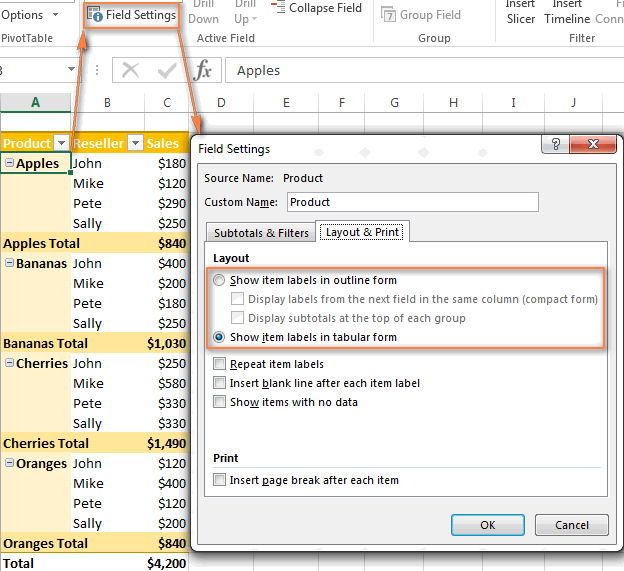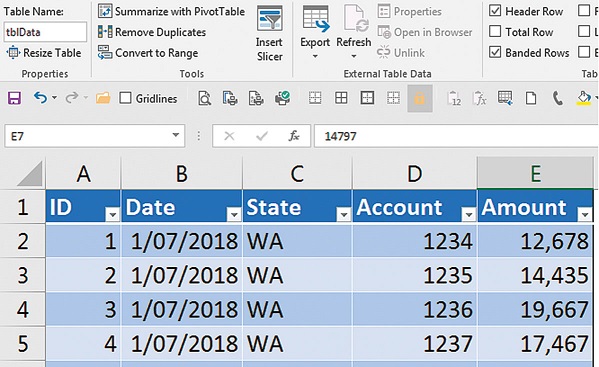How To Create A Cross Tab Table In Excel For Mac 2016
Open the filter menu. Click the drop-down arrow to the right of the header for the column whose data you want to filter. A drop-down menu will appear. In order to do this, you must have both the 'Header Row' and the 'Filter' boxes checked in the 'Table Style Options' section of the Design tab.
- How To Create A Cross Tab Table In Excel For Mac 2016 Product
- How To Create A Cross Tab Table In Excel For Mac 2016 Manual
- How To Create A Cross Tab Table In Excel For Mac 2016 Version
- Click inside the table to select it. Then, click on the Design tab on Excel's ribbon. On the left side of this menu, find the Table Name box and type in a new name for your table. Make sure that it's a single word (no spaces are allowed in table names.).
- I'm trying to build relationships between tables on Excel 2016 for Mac, and I can't seem to figure out how to do it. The goal is to build a relationship between two tables and then to create a PivotTable for them. How do I do this? I am a brand new Excel user, so, if possible, a step-by-step walkthrough would be greatly appreciated!
- Dim rngCTab As Range 'Used for range in Sheet1 cross tab sheet Dim rngList As Range 'Destination range for the list Dim ROW As Long Set wsCrossTab = Worksheets('Sheet1') 'AMEND TO SHOW SHEET NUMBER WITH THE CROSS TAB Set wsList = Worksheets.Add 'Find the last row in Sheet1 with the cross tab iLastRow = wsCrossTab.Cells(Rows.Count, 'A').
Developer tab is one of the most important and highly useful options in Excel. But, before you use it you need add it on ribbon. When you install Excel, you need to activate it for first time.
So today in this post, you will learn 3 different methods to add developer tab in Excel for windows as well as in Excel 2011 for mac.
To enable it follow these simple steps.
- Go to File Tab → Options → Customize Ribbon.
- In the main tab list, tick mark check box for the developer.
- Click OK.
Here is another method to display developer tab.
- Right click on Excel ribbon and select customize ribbon.
- In main tab list, tick mark check box for the developer.
- Click OK.
After following any of the above methods you can activate developer tab in Excel for Windows.
Note: You can use both of the above methods in Windows version of Excel (2007, 2010, 2013 and 2016)
Here are the steps to add developer tab in Excel 2011 for Mac.
How To Create A Cross Tab Table In Excel For Mac 2016 Product
- Go to Excel Menu → Preferences.
- Click on Ribbon in 'Sharing & Privacy Group' and then Click OK.
- Now, you will get a pop-up dialog box. In customization section, select Developer Tab & click OK.
After following any of the above methods you can activate developer tab in Excel 2011 for Mac.
What's Next
VBA is one of the Advanced Excel Skills, and if you are getting started with VBA, make sure to check out there (What is VBA and Excel Programming)
Puneet is using Excel since his college days. He helped thousands of people to understand the power of the spreadsheets and learn Microsoft Excel. You can find him online, tweeting about Excel, on a running track, or sometimes hiking up a mountain.
I often find myself struggling to deal with data that has been rendered almost unusable by the data provider who has converted it to a cross tab format. Usually they think they are helping and have probably started with a nice flat list then spent ages formatting it so the data spreads out across the columns. Sometimes they have achieved this by putting the data into a pivot table but then have pasted the table as values and removed all links to the underlying data. Very helpful.
Yesterday I had to deal with a data file that looked a little like this only it spread out across 455 columns and was frankly useless.
I wrote a post a while back that demonstrated how to convert a simple cross tab back to a manageable data list but I wanted to expand this with a slightly more complex example which had more field headings.
Excel table to flat list
How To Create A Cross Tab Table In Excel For Mac 2016 Manual
So starting with the table above which was probably a pasted copy from a pivot table I applied a little bit of formatting to achieve the following starting table.
What I have done is remove the grouping that the pivot table applies and ensured that I have the relevant week number, project and department details against each name
I often wish to convert pivot table outputs back into a data file and the way I fill in the blanks caused by grouping data is to prepare a sheet with formulas that copy values from above (or the side as appropriate): Wondershare dr fone crack windows 8.
I then copy the pivot table data and then use the paste special command selecting paste values and skip blanks as the options.

This results in the following output, which I then copy and paste over itself as values, to give me the desired structure.
Having spent a bit of time on the structure of my starting file I can run the macro that will work through each row and transpose the data from a columnar layout to one based on rows.
The advantage of this format is that I can now create my own pivot tables and cut the data as I see fit to produce multiple summary formats according to my audience.
Here’s the macro I use:



1 2 3 4 5 6 7 8 9 10 11 12 13 14 15 16 17 18 19 20 21 22 23 24 25 26 27 28 29 30 31 32 33 34 35 36 37 38 39 40 41 42 43 44 45 46 47 48 49 50 51 52 53 54 55 56 57 58 59 60 61 62 63 | Sub CrossTabToList() 'written by Doctor Moxie Dim wsCrossTab As Worksheet Dim wsList As Worksheet Dim iLastCol AsLong Dim iLastRow AsLong Dim iLastRowList AsLong Dim rngCTab As Range 'Used for range in Sheet1 cross tab sheet Dim rngList As Range 'Destination range for the list Dim ROW AsLong Set wsCrossTab = Worksheets('Sheet1') 'AMEND TO SHOW SHEET NUMBER WITH THE CROSS TAB Set wsList = Worksheets.Add 'Find the last row in Sheet1 with the cross tab iLastRow = wsCrossTab.Cells(Rows.Count, 'A').End(xlUp).ROW 'Set the initial value for the row in the destination worksheet 'I set mine as 2 as I want to put headings in row 1 iLastRowList = 2 'Find the last column in Sheet1 with the cross tab iLastCol = wsCrossTab.Range('A2').End(xlToRight).Column 'Set the heading titles in the list sheet 'You will need to amend these to something appropriate for your sheet wsList.Range('A1:F1') = Array('NAME', 'PROJECT', 'TYPE', 'PLAN/ACTUAL', 'WEEK', 'HOURS') 'Start looping through the cross tab data For ROW = 3 To iLastRow 'START AT ROW 3 AS THIS IS WHERE DATA BEGINS IN MY CROSS TAB Set rngCTab = wsCrossTab.Range('A' & ROW, 'C' & ROW) 'initial value A3 SETS THE RANGE TO INCLUDE ALL STATIC DATA - IN THIS CASE NAME, PROJECT, TYPE Set rngList = wsList.Range('A' & iLastRowList) 'initial value A2 'Copy individual names in Col A (A3 initially) into as many rows as there are data columns 'in the cross tab (less 3 for Col A-C). rngCTab.Copy rngList.Resize(iLastCol - 3) 'SELECT THE HEADING ROW WITH FORECAST/ACTUAL 'Move up ROW (INITIALLY 3) rows less TWO and across 3 columns (using offset function). Copy. rngCTab.Offset(-(ROW - 2), 3).Resize(, iLastCol - 3).Copy 'Paste transpose to columns in the list sheet alongside the static data rngList.Offset(0, 3).PasteSpecial Transpose:=True 'SELECT THE ROW WITH THE WEEK NUMBERS 'Move up ROW (INITIALLY 3) rows less ONE and across 3 columns (using offset function). Copy. rngCTab.Offset(-(ROW - 1), 3).Resize(, iLastCol - 3).Copy 'Paste transpose to columns in the list sheet alongside the static data rngList.Offset(0, 4).PasteSpecial Transpose:=True 'Staying on same row (3 initially) copy the data from the cross tab rngCTab.Offset(, 3).Resize(, iLastCol - 3).Copy 'Past transpose as column in list sheet rngList.Offset(0, 5).PasteSpecial Transpose:=True 'Set the new last row in list sheet to be just below the last name copied iLastRowList = iLastRowList + (iLastCol - 3) 'increment ROW by 1 Next ROW EndSub |
How To Create A Cross Tab Table In Excel For Mac 2016 Version
Here is a copy of file – you could copy the macro code from here: CrossTab-to-Flatfile